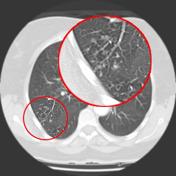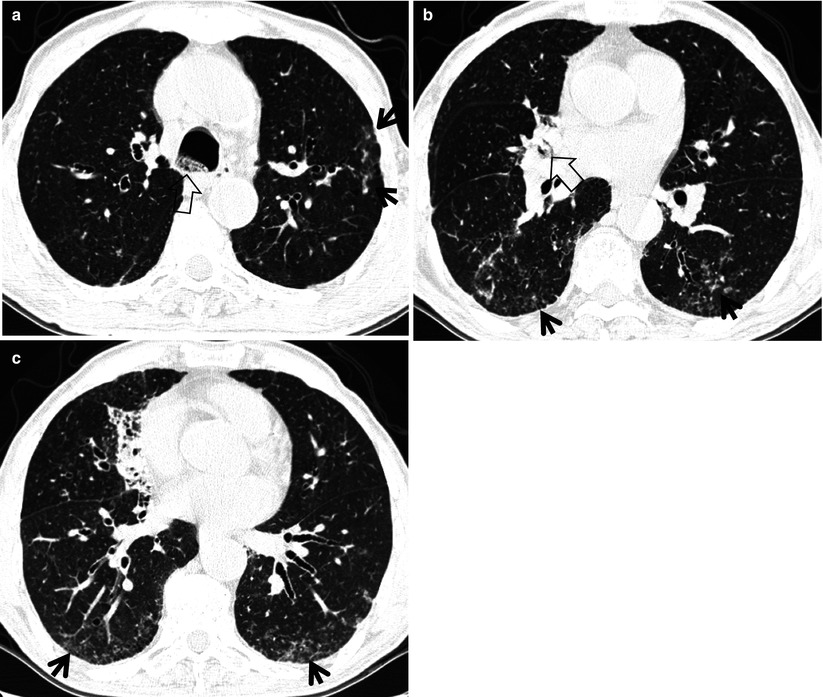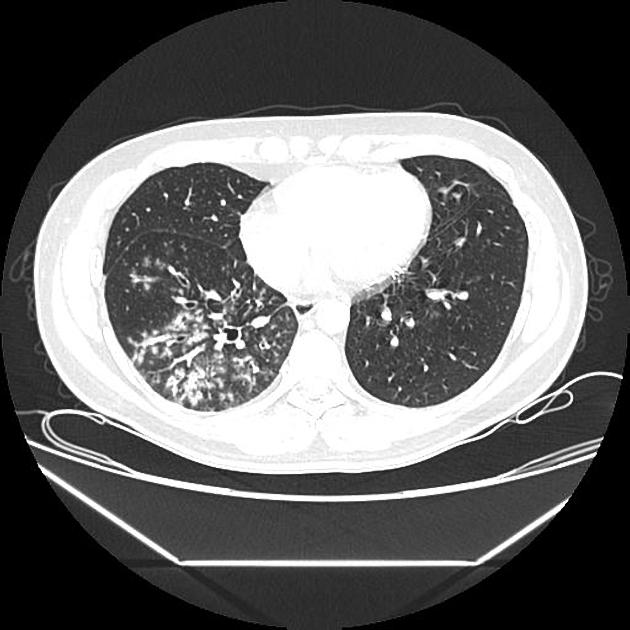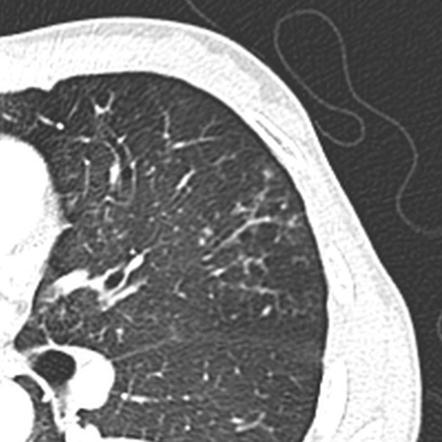tree in bud opacities
The tree-in-bud sign has been described in cases of acute aspiration 13. The most common CT findings are centrilobular nodules and branching linear and nodular opacities.
Tree in bud opacification refers to a sign on chest CT where small centrilobular nodules and corresponding small branches simulate the appearance of the end of a branch belonging to a tree that is in bud.
. Multiple causes for tree-in-bud TIB opacities have been reported. Originally and still often thought to be specific to endobronchial Tb the sign is actually non-specific and is the manifestation of pus mucus fluid or other. The tree-in-bud sign is a nonspecific imaging finding that implies impaction within bronchioles the.
8081 On CT the tree-in-bud pattern manifests as small 24 mm centrilobular well-defined nodules connected to linear branching opacities that. Kanne MD Professor and Chief Thoracic Imaging Univesity of Wisconsin. Bronchiolitis is characterized at thin-section CT by the presence of centrilobular nodules and linear branching opacities producing a tree-in-bud appearance Fig 7 4.
Malignancy can be associated with the tree-in-bud sign. This tree-in-bud pattern is due to the presence of caseation necrosis and granulomatous inflammation within and surrounding the terminal and respiratory bronchioles and alveolar ducts reflecting endobronchial spread of tuberculosis. These are due to filling of the distal bronchioles and involvement of the adjacent alveoli most often caused by infectious bronchiolitis bronchitis and aspiration.
Tree-in-bud opacities appear as tiny centrilobular branching structures on CT most often in the lung periphery which resemble budding trees Figure 18-4. 32 rows Tree-in-bud TIB opacities are a common imaging finding on thoracic CT scan. The tree-in-bud pattern or sign should be used in case of visible tree and bud.
A young male patient who had a history of fever cough and respiratory distress presented in the emergency departmen. In the hospital MTB cannot be missed. 11 TIB opacities represent a central imag- Background.
In radiology the tree-in-bud sign is a finding on a CT scan that indicates some degree of airway obstruction. The purpose of this study was to determine the relative frequency of causes of TIB opacities and identify patterns of disease associated with TIB opacities. The tree-in-bud sign has been described in cases of acute aspiration 13.
Sarcoidosis another common disease typically shows small nodules in perilymphatic distribution. I do not believe that the CT findings of COVlD-19 are pathognomonic or different from other causes of acute lung injury. Uncommonly this pattern can be seen in other entities that cause luminal impaction bronchiolar dilatation or wall thickening including cystic fibrosis immune deficiency inflammatory bowel disease and diffuse panbronchiolitis.
Multiple causes for tree-in-bud TIB opacities have been reported. The term centrilobular branching opacity is desirable in case the bud is absent. However to our knowledge the relative frequencies of the causes have not been evaluated.
Please remember this important caveat though. TIB opacities are also associated with bronchiectasis and small airways obliteration resulting in mosaic air trapping. The most common CT findings are centrilobular nodules and branching linear and nodular opacities.
However BAC can occasionally show tree-in-bud pattern ground-glass opacities or crazy-paving pattern. The tree-in-bud sign can be commonly caused by respiratory infections including that of mycobacterial bacterial and viral causes. Intravascular pulmonary tumor embolism often occurs in cancers of the breast liver kidney stomach prostate and ovaries and can lead to the tree-in-bud sign in HRCT 214.
The pattern of the tree correlates to an intralobular inflammatory bronchiole and the bud correlates to inflammatory filling in alveolar ducts. We suggest that clusters of micronodules on CT in adult active pulmonary tuberculosis represent aggregated tree-in-bud lesions. However in some cases nodules occurring in relation to centrilobular arteries may mimic the appearance of the tree-in-bud pattern.
However to our knowledge the relative frequencies of the causes have not been evaluated. Malignancy can be associated with the tree-in-bud sign. The most common HRCT patterns include the septal reticular ground-glass opacity crazy paving pattern mixed ground-glass opacity and reticular nodular tree-in-bud pattern nodular without tree-in-bud pattern nodular with ill-defined centrilobular reticulonodular cystic mixed cystic with ground-glass opacity decreased attenuation and.
Clinical manifestations include acute tracheo-bronchitis bronchiolitis and bronchopneumonia. Tree-in-bud TIB appearance in computed tomography CT chest is most commonly a manifestation of infection. Fungal hyphae are often found in the airway lumen Fig 7c.
Intravascular pulmonary tumor embolism often occurs in cancers of the breast liver kidney stomach prostate and ovaries and can lead to the tree-in-bud sign in HRCT 214. The tree-in-bud pattern suggests active and contagious disease especially when associated with adjacent cavitary disease within the lungs. We here describe an unusual cause of TIB during the COVID-19 pandemic.

Tree In Bud Sign Lung Radiology Reference Article Radiopaedia Org

Tree In Bud Sign Radiology Key

Tree In Bud Pattern Pulmonary Tb Eurorad

Tree In Bud Sign And Bronchiectasis Radiology Case Radiopaedia Org

References In Causes And Imaging Patterns Of Tree In Bud Opacities Chest

Tree In Bud Appearance Radiology Case Radiopaedia Org

Chest Ct With Multifocal Tree In Bud Opacities Diffuse Bronchiectasis Download Scientific Diagram

Tree In Bud Pattern Radiology Case Radiopaedia Org

Tree In Bud Sign Lung Radiology Reference Article Radiopaedia Org

Hrct Scan Of The Chest Showing Diffuse Micronodules And Tree In Bud Download Scientific Diagram

Tree In Bud Sign Lung Radiology Reference Article Radiopaedia Org

Tree In Bud Pattern Radiology Case Radiopaedia Org

Pdf Tree In Bud Semantic Scholar
View Of Tree In Bud The Southwest Respiratory And Critical Care Chronicles
